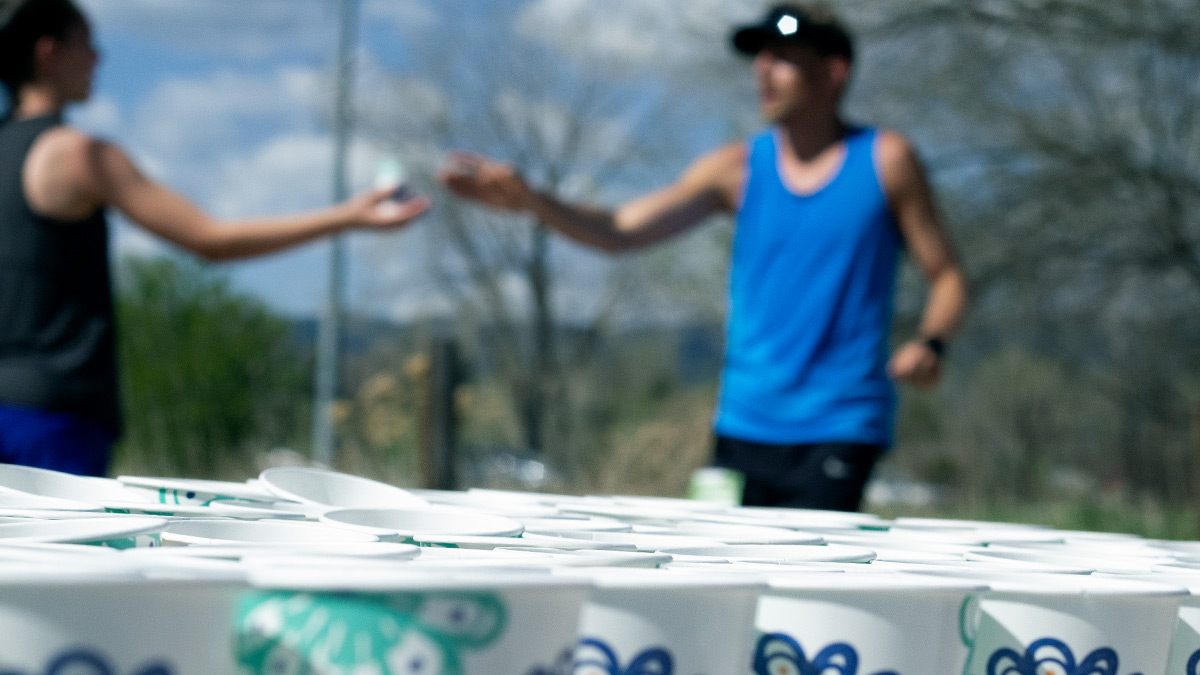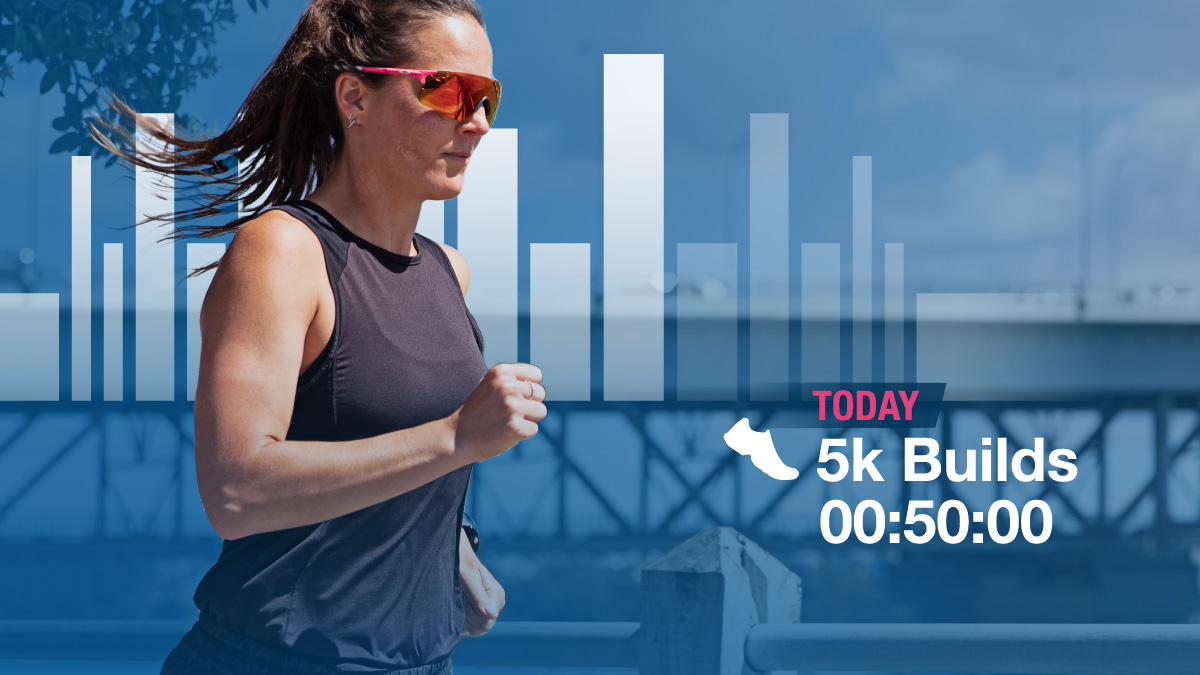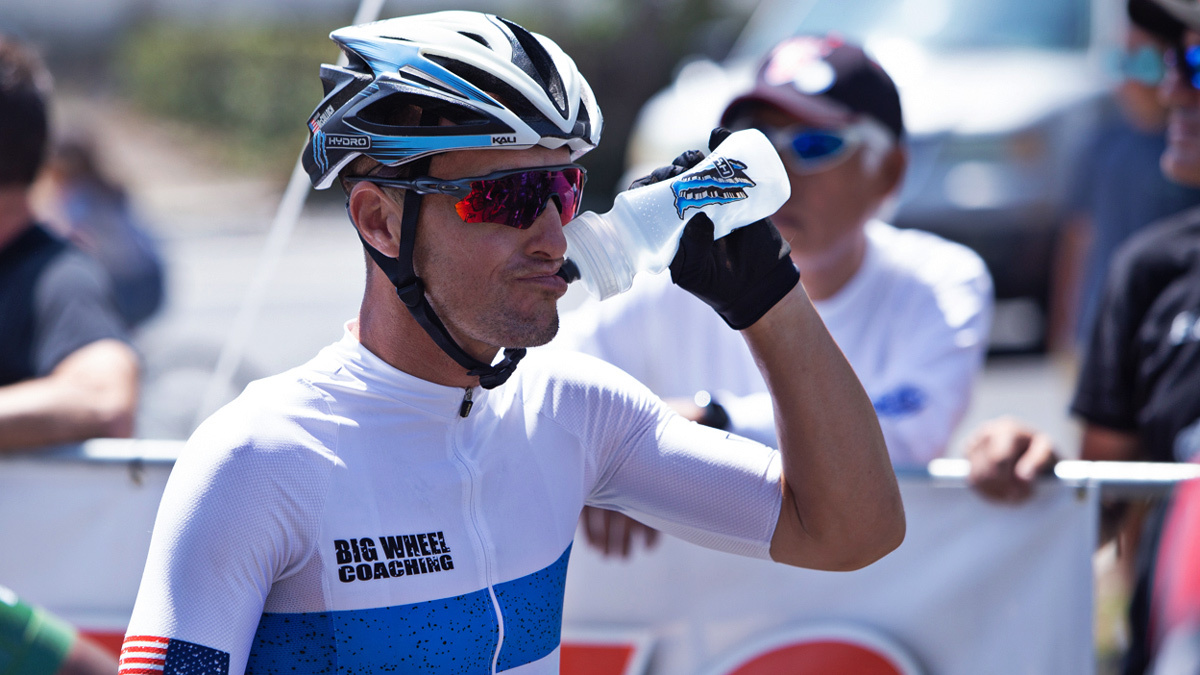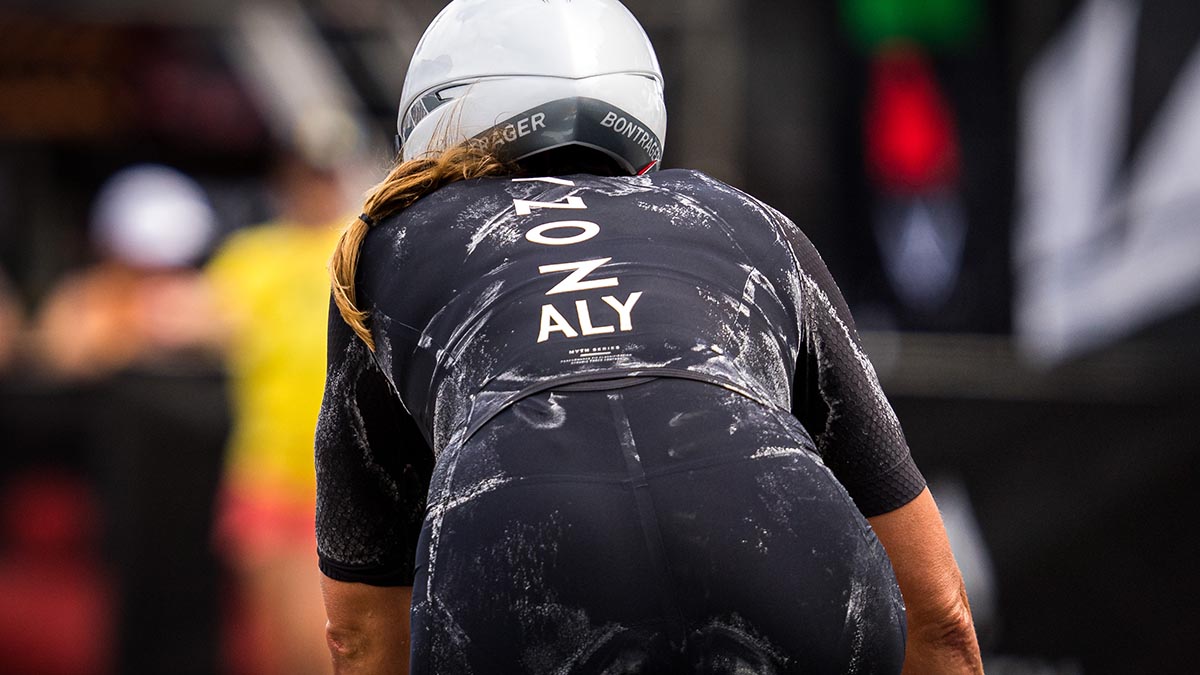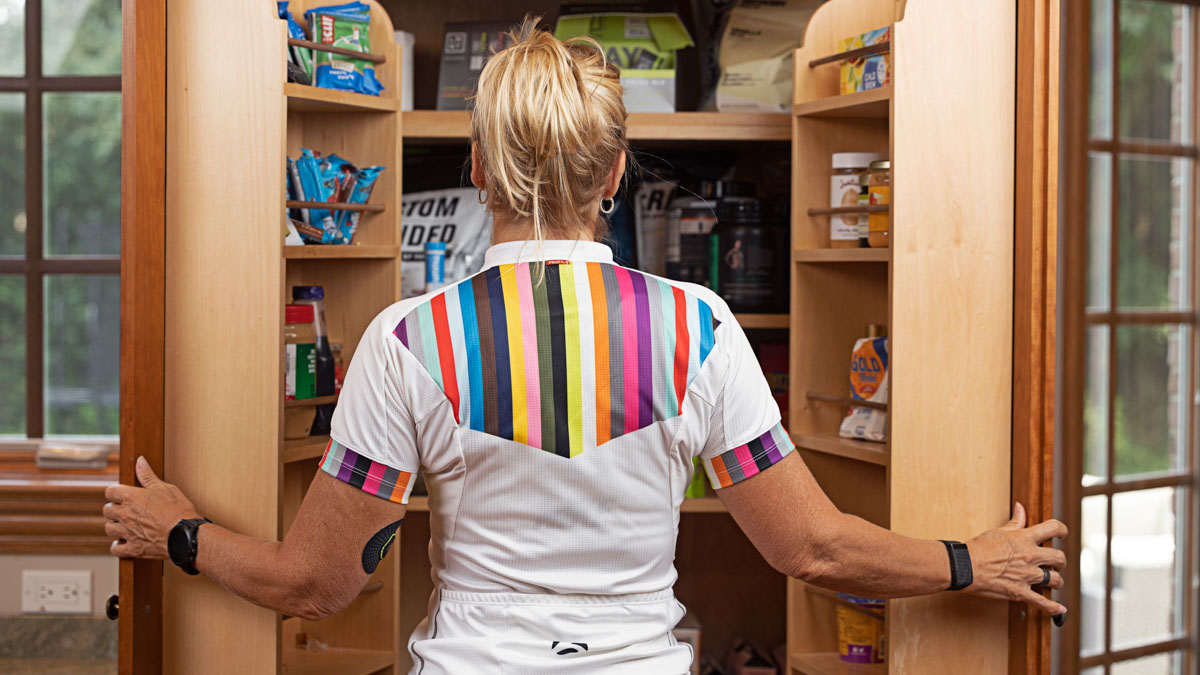It’s not uncommon for endurance athletes to see some ‘cankling’ (my own technical term) in the days after a particularly arduous race. Defined (by Urban Dictionary) as “a swelling of the ankle and lower calf, so as to obliterate the normal tapered boundary between the two,” cankles seem to be the subject of many post-race chats on endurance sport message boards.
I’ve also personally experienced post-race cankles so many times that my wife is used to monitoring my ‘fat feet’ as a kind of recovery index in the week after my events! But what causes this type of fluid retention, and what can you do to avoid or manage it?
5 Reasons You Might Puff Up After a Race
Under normal circumstances, (i.e. not the day after competing in Kona or at the Western States 100), retaining fluid in the lower leg can be a big red flag, possibly indicating impending organ failure. When the heart or kidneys in particular stop functioning properly, they become unable to adequately support fluid circulation around the body. Consequently, gravity starts to win the battle where fluid accumulates. Very swollen feet and ankles on a long-term basis are a cause for concern, warranting a visit to the doctor.
Fortunately, while a temporary case of post-race cankles is not necessarily a good thing, it’s most likely a simple indication of some short-term issue for the body to work through rather than full-on heart or kidney failure setting in. A number of factors can plausibly combine to make it happen, especially in a race setting. Some of the main potential culprits are:
1. Capillary Damage and Leakage
Arduous long-duration exercise, especially running (due to the impact involved), subjects muscles and blood vessels to a high level of trauma that results in physical damage to these tissues.
This can cause leakage in the capillary beds in your muscles—through the vessel walls from the vascular system into the extracellular space. With blood flow being greatly increased during exercise and with gravity driving fluids downwards, this leakage can start to accumulate in the feet and ankles in particular, hence the appearance of cankles.
2. Excessive Fluid Intake
A 2012 study measured fluid accumulation in the lower limbs of ultra runners during a 100-kilometer race.
About 25% of the athletes showed an increase in foot volume due to fluid retention and, having compared this to their individual levels of fluid intake, the authors concluded that the swelling was potentially linked to them drinking too much during the event.
This makes intuitive sense: if you over-consume fluid during an event (relative to your fluid losses via sweating and urinating) it’s bound to accumulate somewhere!
3. Electrolyte Imbalance
Electrolyte imbalances (notably in sodium levels, but also possibly in potassium), caused by sweating large volumes and/or diluting the body with too much fluid intake can also contribute to fluid retention.
Low sodium and potassium levels in the blood can prompt fluid to be shifted from the intracellular to the extracellular space to help maintain blood sodium at appropriate levels.
At the other end of the spectrum, excessive sodium intake can also promote fluid retention, as the body holds on to water to dilute sodium levels back down to acceptable concentrations. I’ve heard of this happening to a pro cyclist with a low sweat rate who overconsumed salt in the first few days of a Grand Tour and initially gained weight, before cutting back and dropping back to normal!
What this highlights is that there’s a sweet spot for every athlete when it comes to electrolyte (mainly sodium) intake, for optimal fluid balance during long-duration activities. Both too little and too much salt can potentially be problematic when it comes to fluid balance, so an awareness of your intake versus what’s considered to be best practice is very useful.
4. Kidney Damage
Just as people with kidney disease can suffer lower limb swelling because their damaged organs can’t process the volume of urine needed to maintain an appropriate fluid balance, it’s possible that ultra-endurance exercise can cause a form of short-term kidney damage resulting in similar issues for a few days after an event.
It’s also understood that in cases of rhabdomyolysis (extreme muscular breakdown as a result of strenuous exercise, often in the heat), kidney failure and fluid retention are also common.
The extent and severity of ultra-endurance induced kidney damage are not yet fully understood. However, research is being conducted in this area and it seems very plausible that it may exert a degree of influence on fluid balance in the days immediately after a race.
5. Post-Race Immobility and Travel
Many healthy people suffer from a degree of ‘cankling’ when sitting for prolonged periods on long flights or during long road trips, even without having undertaken prior endurance exercise.
Between travel and recovery, many athletes spend the days immediately after big events either flying, driving back home, or just sitting around. Given that an athlete’s tendency toward fluid retention is no doubt amplified by all of the other factors listed above, periods of inactivity will make swollen feet and ankles even more likely.
6 Ways to Prevent/Cure Post-Race Fluid Retention
Some level of post-event fluid retention might be inevitable (and is unlikely to be hugely problematic), but there are a few things you can do to prevent or to manage it if it does tend to happen to you.
1. Train Adequately for the Distance and Pace You’re Going to Race
As obvious as this sounds, this is important, as the amount of trauma your body is subjected to is relative to the level of specific and relevant fitness you carry into an event.
It therefore stands to reason that if you’re physically well prepared, your muscles will suffer less insult as a result of competing. This will decrease the likelihood of many post-event issues including, but not limited to, fluid retention.
2. Practice Appropriate Fluid and Electrolyte Intake Strategies
It’s probable that both excessive and inadequate fluid and sodium intake relative to sweat losses could contribute to fluid retention in the aftermath of an event. If you tend to puff up after an event, dialing your electrolyte and fluid consumption to levels that work for you is even more important.
Remember, these factors are extremely individual, so some intelligent trial and error based on a basic understanding of your water and sodium needs is required to get this right. Precision Hydration’s free online sweat test is a good place to start if you don’t know where else to begin.
Copying other people’s hydration strategies, no matter how great their performances are, is not always a particularly smart move. Remember, there can be large variances in individual sodium and fluid requirements, especially in very long or hot races.
3. Use Cold Therapies to Reduce Swelling in the Immediate Aftermath
Cold water immersion, cold showers, and ice packs in the hours after a race can all help to reduce swelling in affected areas of the body. There’s no harm in using these methods to reduce the issue as soon as you can after you’ve finished.
4. Elevate your legs
This will give your circulatory system some assistance from gravity in the hours and days after the event if you start to see cankles appearing. Prop your legs up on pillows in bed or on the sofa, and if you can, lay down with your feet up against a wall as often as possible during the day.
5. Use Compression
Use compression socks, leggings, or gadgets like Normatec boots (if you have access to them) to help the fluid return to your heart from your lower limbs.
6. Move!
Try to avoid being sedentary for too long in the days after an event if you’re showing signs that you’ve retained a lot of fluid. Include plenty of walking, some easy swimming, or very light spinning on a bike into your recovery week to further help circulation.
If you’re flying, heading out on a long drive, or if you’re desk-bound, get up regularly and stretch your legs as much as possible. Light massage may also help if you can see a sports therapist, too.
In summary, post-exercise fluid retention is not uncommon in endurance athletes doing long or arduous events. In many cases, it’s also unlikely to represent a serious long-term problem and should resolve itself within a few days. There are likely to be multiple causes, so any preventive measures or methods for dealing with it need to reflect that. If fluid retention becomes a significant or long-term problem, it’s definitely something that should be investigated medically to rule out any serious underlying conditions in major organs.
References
Cejka, C. et al. (2012, April 3). An increased fluid intake leads to feet swelling in 100-km ultra-marathoners – an observational field study. Retrieved from https://www.ncbi.nlm.nih.gov/pmc/articles/PMC3366912/
Hodgson, L. (2017, June). Acute kidney injury associated with endurance events-is it a cause for concern? A systematic review. Retrieved from https://pubmed.ncbi.nlm.nih.gov/29259804/
